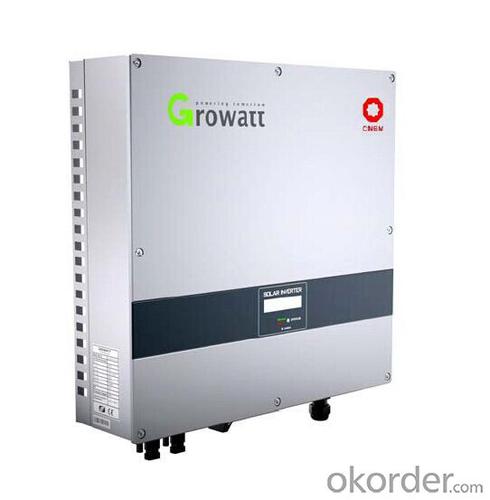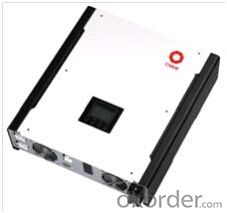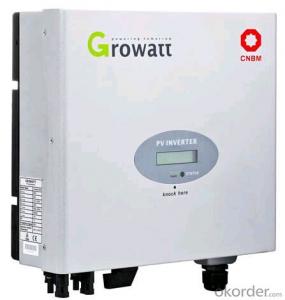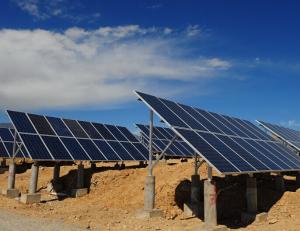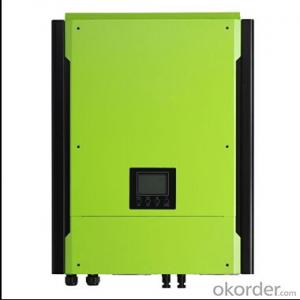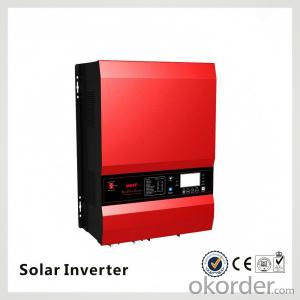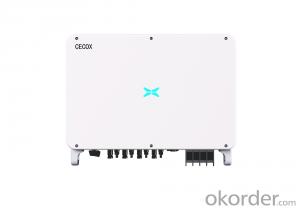300kw Solar Inverter 2kw On-grid Inverter with Energy Storage 1kw/2kw/3kw Hybrid Inverter
- Loading Port:
- China main port
- Payment Terms:
- TT OR LC
- Min Order Qty:
- 1000 watt
- Supply Capability:
- 100000 watt/month
OKorder Service Pledge
OKorder Financial Service
You Might Also Like
Introduction
On-grid Inverter with Energy Storage 2kW/3kW hybrid inverter
Pure sine wave output
Microprocessor controlled to guarantee stable charging system
Multiple operations: Grid tie, Off grid, and grid tie with backup
Built-in MPPT solar charger
LCD display panel for comprehensive information
Multiple communication
Green substitution for generators
User adjustable charging current up to 25A
Features
Feed-in is not only choice
In comparison with conventional grid-tie inverter, CNBM-H is able to not only feed-in power to
grid but also store solar power to battery for future usage and directly power to the loads.
Save money by discharging battery for self-consumption first
CNBM-H can save money by using battery energy first when PV energy is low. Until battery
energy is low, CNBM will extract AC power from the grid.
Power backup when AC failed
CNBM-H can operate as an off-grid inverter to provide continuous power even without the grid.
It’s perfect power solution for remote regions or temporary AC power source such as camping or flea market.
Images
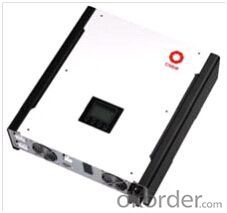

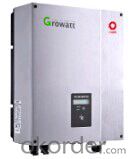

Sepecification
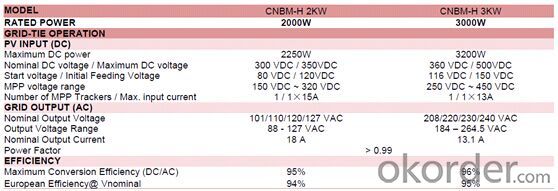
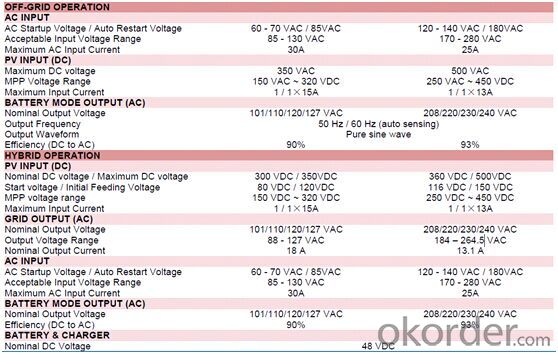
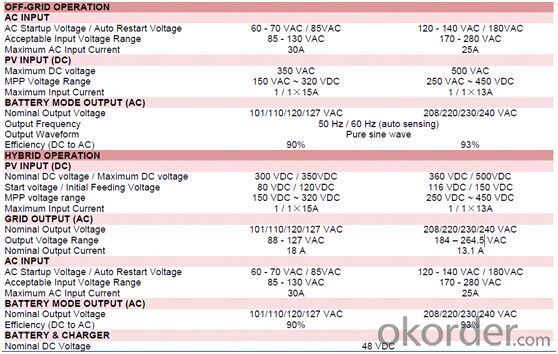
FAQ
Q1: How to choose a right inverter?
A1:Tell us your demand, then our sales will recommend a suitable inverter to you.
Q2: What's the different between inverter and solar inverter?
A2: Inverter is only accept AC input, but solar inverter not only accept AC input but also can connect with solar panel to accept PV input, it more save power.
Q3: How about the delivery time?
A3: 7 days for sample; 25 days for bulk order.
Q4: What is the warranty of inverter?
A4: 5/10 years warranty on CNBM-Solar product.
Q5: How to solve the technical problem?
A5: 24 hours after-service consultancy just for you and to make your problem to solve easily.
- Q: Can a solar inverter be used with a solar air conditioning system?
- Yes, a solar inverter can be used with a solar air conditioning system. A solar inverter is responsible for converting the direct current (DC) electricity produced by solar panels into alternating current (AC) electricity that can be used to power household appliances, including air conditioning systems. By connecting a solar inverter to a solar air conditioning system, the energy generated by the solar panels can be efficiently utilized to cool the environment. This not only maximizes the use of renewable energy but also helps in reducing electricity costs and minimizing the carbon footprint.
- Q: What is the maximum efficiency at partial load for a solar inverter?
- The maximum efficiency at partial load for a solar inverter typically depends on the specific model and design. However, in general, modern solar inverters are designed to have high efficiency even at partial loads. This means that they can still convert a significant portion of the available solar energy into usable electricity, even when the solar panels are not operating at their maximum capacity. The maximum efficiency at partial load can vary, but it is usually in the range of 85% to 95% for most high-quality solar inverters.
- Q: What are the methods of photovoltaic grid-connected inverter control
- Inverter main circuit need to have a control circuit to achieve, generally have square wave and sine wave two control methods, square wave output inverter power supply circuit is simple, low cost, but low efficiency, harmonic components. Sine wave output is the development trend of the inverter, with the development of microelectronics technology, there are PWM function of the microprocessor has also come out, so the sine wave output inverter technology has matured.
- Q: What is the role of frequency support in a solar inverter?
- The role of frequency support in a solar inverter is to maintain a stable and consistent frequency of the electricity being generated by the solar panels. This is important because the frequency of the electricity needs to match the frequency of the grid in order to ensure smooth and reliable power transmission. The solar inverter constantly monitors the frequency of the grid and adjusts the output of the solar panels to match it, helping to stabilize the overall grid frequency and maintain the integrity of the electrical system.
- Q: Can a solar inverter be used with solar-powered emergency backup systems?
- Yes, a solar inverter can be used with solar-powered emergency backup systems. The solar inverter converts the direct current (DC) generated by the solar panels into alternating current (AC), which can be used to power various appliances and equipment during emergencies. This allows for the efficient utilization of solar energy stored in batteries to provide backup power when the grid is down.
- Q: What is the role of an anti-islanding feature in a solar inverter?
- The role of an anti-islanding feature in a solar inverter is to ensure the safety of utility workers and prevent damage to the electrical grid. It detects when there is a power outage or grid disturbance and immediately shuts off the solar inverter to prevent it from continuing to generate electricity. This feature is crucial as it prevents the solar system from operating independently and feeding power back into the grid, which can be dangerous for utility workers trying to repair the power outage.
- Q: What is the power factor of a solar inverter?
- The power factor of a solar inverter typically refers to the ratio of the real power to the apparent power consumed by the inverter. It represents the efficiency of the inverter in converting DC power from the solar panels into AC power for use in the electrical grid. A high power factor indicates a more efficient inverter that minimizes reactive power losses.
- Q: How does a three-phase solar inverter differ from a single-phase inverter?
- A three-phase solar inverter differs from a single-phase inverter in terms of the number of phases they support. While a single-phase inverter is designed to work with a single-phase electrical system, a three-phase solar inverter is specifically designed to handle three-phase electrical systems. This means that a three-phase inverter can handle higher power loads and is more efficient in distributing power across the three phases, resulting in better overall performance and stability for three-phase electrical systems.
- Q: Can a solar inverter be used in areas with high electromagnetic radiation?
- Yes, a solar inverter can be used in areas with high electromagnetic radiation. However, it is important to consider the specific requirements and limitations of the inverter as some models may have different tolerance levels for electromagnetic interference. It is recommended to consult the manufacturer's specifications or seek professional advice to ensure proper functioning and safety in such environments.
- Q: Can a solar inverter be used with thin-film solar panels?
- Yes, a solar inverter can be used with thin-film solar panels. Thin-film solar panels have a different structure and composition compared to traditional crystalline silicon panels, but they still generate DC electricity that needs to be converted into AC for use in homes or businesses. A solar inverter is responsible for this conversion process, regardless of the type of solar panels used.
Send your message to us
300kw Solar Inverter 2kw On-grid Inverter with Energy Storage 1kw/2kw/3kw Hybrid Inverter
- Loading Port:
- China main port
- Payment Terms:
- TT OR LC
- Min Order Qty:
- 1000 watt
- Supply Capability:
- 100000 watt/month
OKorder Service Pledge
OKorder Financial Service
Similar products
Hot products
Hot Searches
Related keywords


